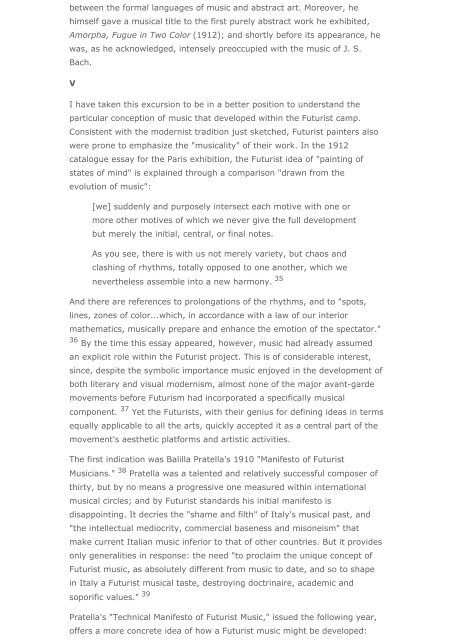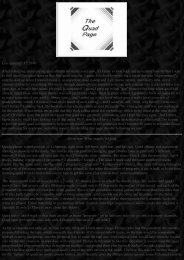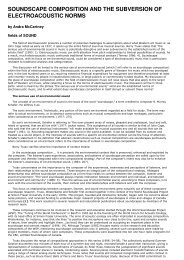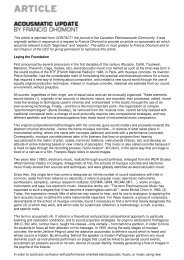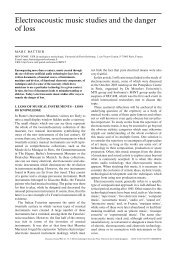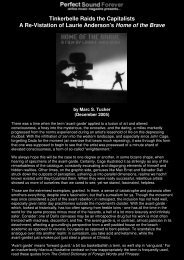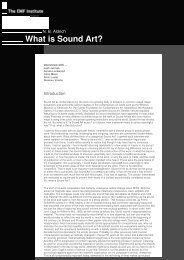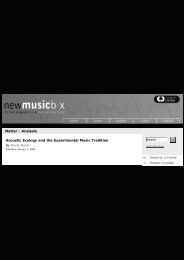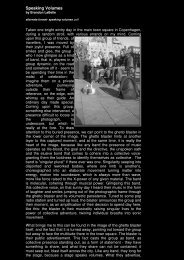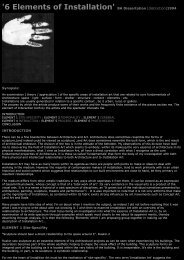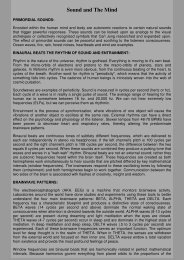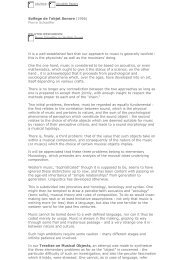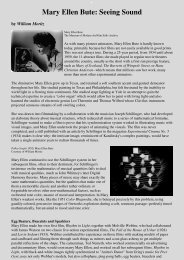Morgan-1994-A New Musical Reality- Futurism, Modernism and The ...
Morgan-1994-A New Musical Reality- Futurism, Modernism and The ...
Morgan-1994-A New Musical Reality- Futurism, Modernism and The ...
Create successful ePaper yourself
Turn your PDF publications into a flip-book with our unique Google optimized e-Paper software.
etween the formal languages of music <strong>and</strong> abstract art. Moreover, hehimself gave a musical title to the first purely abstract work he exhibited,Amorpha, Fugue in Two Color (1912); <strong>and</strong> shortly before its appearance, hewas, as he acknowledged, intensely preoccupied with the music of J. S.Bach.VI have taken this excursion to be in a better position to underst<strong>and</strong> theparticular conception of music that developed within the Futurist camp.Consistent with the modernist tradition just sketched, Futurist painters alsowere prone to emphasize the "musicality" of their work. In the 1912catalogue essay for the Paris exhibition, the Futurist idea of "painting ofstates of mind" is explained through a comparison "drawn from theevolution of music":[we] suddenly <strong>and</strong> purposely intersect each motive with one ormore other motives of which we never give the full developmentbut merely the initial, central, or final notes.As you see, there is with us not merely variety, but chaos <strong>and</strong>clashing of rhythms, totally opposed to one another, which wenevertheless assemble into a new harmony. 35And there are references to prolongations of the rhythms, <strong>and</strong> to "spots,lines, zones of color...which, in accordance with a law of our interiormathematics, musically prepare <strong>and</strong> enhance the emotion of the spectator."36 By the time this essay appeared, however, music had already assumedan explicit role within the Futurist project. This is of considerable interest,since, despite the symbolic importance music enjoyed in the development ofboth literary <strong>and</strong> visual modernism, almost none of the major avant-gardemovements before <strong>Futurism</strong> had incorporated a specifically musicalcomponent. 37 Yet the Futurists, with their genius for defining ideas in termsequally applicable to all the arts, quickly accepted it as a central part of themovement's aesthetic platforms <strong>and</strong> artistic activities.<strong>The</strong> first indication was Balilla Pratella's 1910 "Manifesto of FuturistMusicians." 38 Pratella was a talented <strong>and</strong> relatively successful composer ofthirty, but by no means a progressive one measured within internationalmusical circles; <strong>and</strong> by Futurist st<strong>and</strong>ards his initial manifesto isdisappointing. It decries the "shame <strong>and</strong> filth" of Italy's musical past, <strong>and</strong>"the intellectual mediocrity, commercial baseness <strong>and</strong> misoneism" thatmake current Italian music inferior to that of other countries. But it providesonly generalities in response: the need "to proclaim the unique concept ofFuturist music, as absolutely different from music to date, <strong>and</strong> so to shapein Italy a Futurist musical taste, destroying doctrinaire, academic <strong>and</strong>soporific values." 39Pratella's "Technical Manifesto of Futurist Music," issued the following year,offers a more concrete idea of how a Futurist music might be developed:


